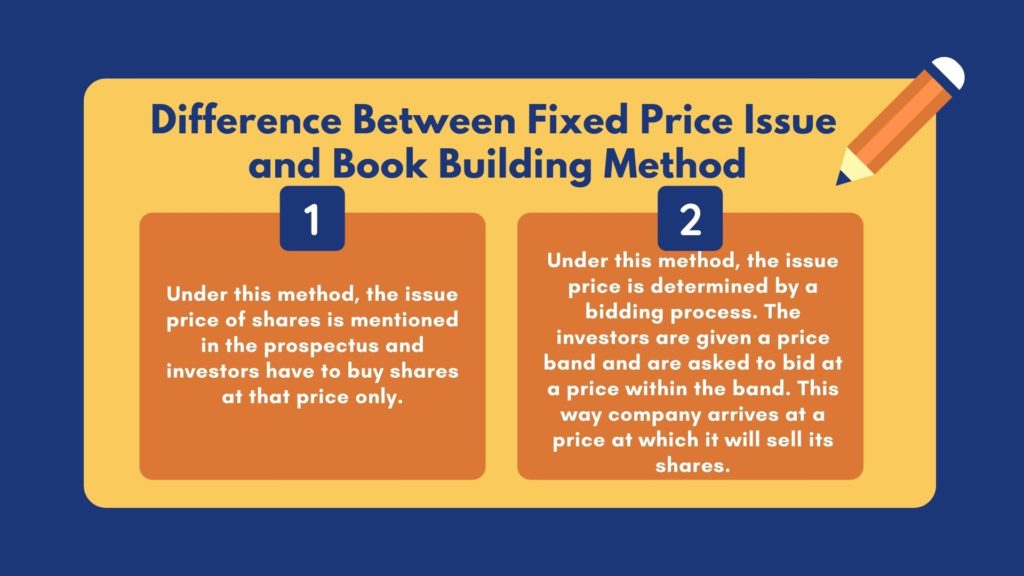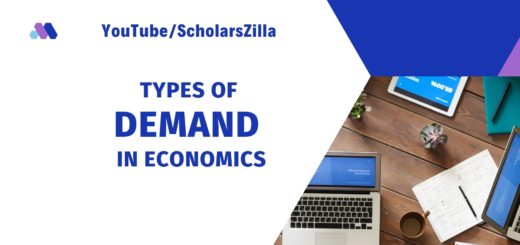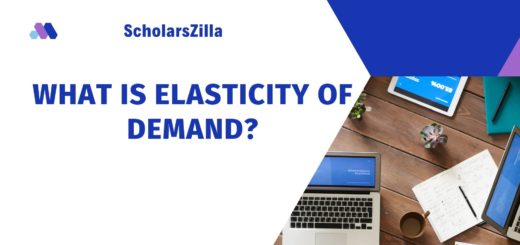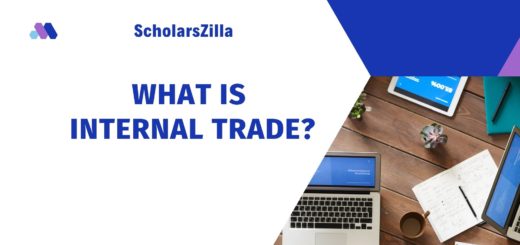Difference Between Fixed Price Issue Method and Book Building Method (6 Points)
Table of Contents
Difference Between Fixed Price Issue Method and Book Building Method
Meaning of Fixed Price Issue Method
Under this method, the company states in its prospectus, the quantity and the price at which the shares are offered to the public. The subscribers/investors are asked to pay a certain portion of face value of shares or entire issue price along with the application.
The company comes to know the demand of its shares only after the subscription period ends. Company can issue shares at par or premium. Fixed Price method is used for all types of issues i.e. Public Issue, Right Issue, ESOS, etc.

Meaning of Book Building Method
Under this method, the issuer company determines the number of shares and the issue price at which its shares will be sold by bidding process. The company issues a Red Herring Prospectus which contains price range or price band and asks the investors to bid on it. The lower end of the price band is called as ‘floor price’ while the highest end is called as ‘cap price’ or ‘ceiling price’.
The final price at which shares are offered to the investors is called as ‘cut-off’ price. Investors can bid any number of shares that they are willing to buy at any price within the price band. Bidding is kept open for 5 days. The bids along with the application money is to be submitted to the Lead Merchant Bankers called as ‘Book Runners’ who enter the bids in a book.
After bidding is over, company fixes ‘cut off price’ based on the highest or best price at which all shares on offer can be sold. Company issues a Prospectus that contains the final price. Book Building Method is used for Public issues i.e. IPO and FPO.
A company can make a Public offer through two methods as follows
1) Initial Public Offer (IPO): Initial Public Offer refers to the process of offering shares of a company to the public for the first time. A new company or an existing company that had raised its capital earlier from promoters or other investors may offer its shares to the public when it is in need of fresh funds. The first time, the company offers its shares to the public is called as Initial Public offer.
2) Further Public Offer or Follow on Public Offer (FPO): When a company issues shares to the public after an IPO, it is called as further (Follow on) public offer. Thus, every issue of shares by a listed company after its IPO is called as FPO. FPO leads to an increase in the subscribed capital of a company.
- Difference Between Fixed Capital and Working Capital
- Difference Between Owned Capital and Borrowed Capital
- Difference Between Debenture and Share
- Difference Between Preference Shares and Equity Shares
Difference Between Fixed Price Issue Method and Book Building Method
| Points | Fixed Price Issue Method | Book Building Method |
| 1) Meaning | Under this method, the issue price of shares is mentioned in the prospectus and investors have to buy shares at that price only. | Under this method, the issue price is determined by a bidding process. The investors are given a price band and are asked to bid at a price within the band. This way company arrives at a price at which it will sell its shares. |
| 2) Price of Shares | The exact price of shares is known in advance and it is mentioned in the prospectus. | The price of shares is not known in advance. Only the minimum price and maximum price at which the company is willing to sell the shares is known in advance. |
| 3) Prospectus | The company has to issue a prospectus and it contains the details of price at which shares are offered and the total number of shares offered by the company. | Company issues a Red Herring Prospectus. It contains only the price band and the total size of issue. |
| 4) Determination of Demand | Company comes to know the public demand for its shares only after the closure of the issue | Company can know the public demand for its shares every day. The bids are registered in the book every day till the closure of the issue. |
| 5) Payment of Application Money | Application money or entire money has to be paid by the investor at the time of submitting his application for shares. | Only application money has to be paid at the time of bidding. Money will be collected only after the issue price has been fixed. |
| 6) When Used | It can be used for any issue i.e. Public Issues, Rights Issues, ESOS, etc. | It is usually used in Public issues i.e. IPO and FPO. |


